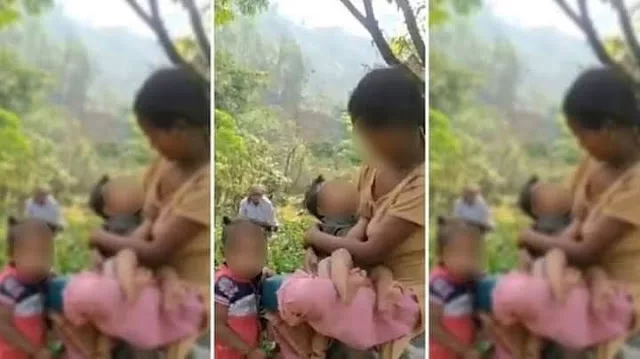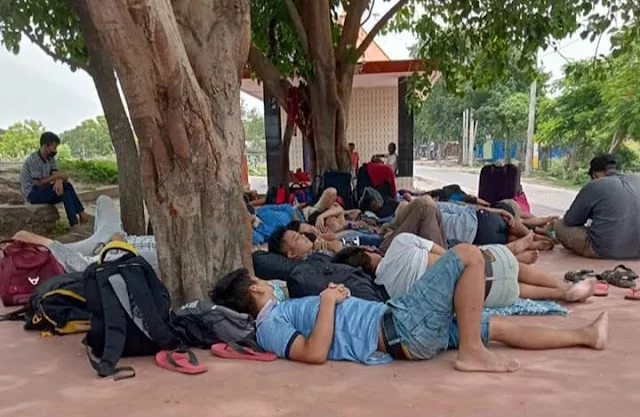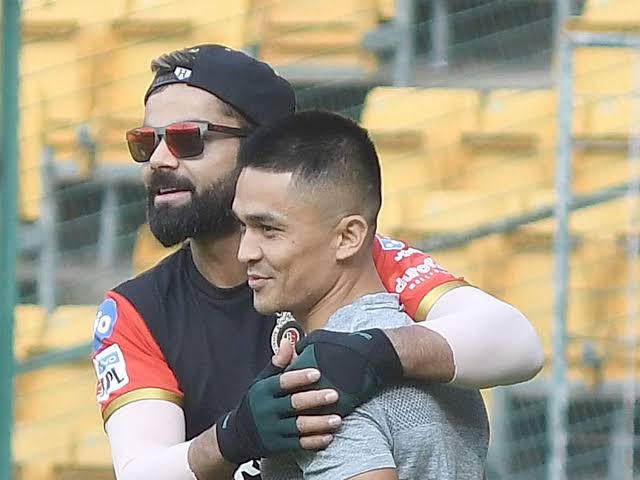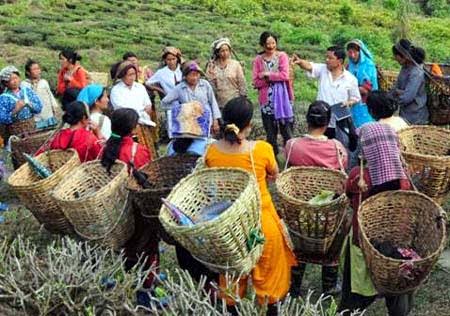Writes: Abriti Moktan*
I was doing a project on the “identity crisis” faced by the Gorkha communities in India and after having worked on it I have become more sensitive towards the issue. My brother friend who graduated from IIM Bangalore had once told me that identity crisis can be checked only by the community itself by earning a credible name in every sector through hard work and perseverance. But now it makes me wonder even after having luminaries in every field from literary, social activism, journalism, education, sports, fashion, music, corporations, bureaucracy, politics to science, the country still thinks the Indian Gorkhas who are ethnically Nepalese and whose mother tongue is Nepali to fall in the servant class.
It was indeed very sad to have encountered a small part in the “Kapoor and Sons” where Alia Bhatt’s caretaker servant is portrayed to be a Nepali. The locale of the movie is the hill station Coonoor, which also resembled my hometown Darjeeling in many ways, with its tea plantations, view points, and the curvy roads. The movie was intriguing with the kind of story it depicted. The audiences can relate to it and enjoy every bit of emotional upheavals which was so very played by all the characters. A small world with the complexity in every relationship where the differences among the family members is finally resolved. Tears rolled down my eyes too, but something in the movie left a very bitter taste, the depiction of ‘Kishore’, a character in the film.”
 |
| Gorkhalis burning Indo-Nepal Friendship Treaty in 1986 which lead to the Kalimpong Massacre, thus leading to violence in the hills in which over 1200 Gorkhas were killed |
“Kapoor and Sons” is directed by Shakun Batra, and featured Fawad Khan and Alia Bhatt, two of my favorite actors. Alia’s (Tia) caretaker servant is portrayed to be a Nepali/Gorkha guy.
Interestingly the writers this time did not stick to the conventional name “Bahadur” and named the servant as ’Kishore’ The movie was smoothly running until when “Kishore” entered the frame and asked Tia (Alia Bhatt) if he could go and watch a Nepali film that has released in the town. Tia asks him to go and watch it alone as she doesn’t understand the Nepali language. The second time “Kishore” enters the frame is when he offers help to Tia when the electricity is down in the house.
Well, the whole scene of this Nepali Servant might not even have lasted for more than two to three minutes but it left a lasting impression on me.
The locale of the movie is Coonoor which made me curious of the fact that the hilly place must have been chosen for some reason. When I recollected the number of Bollywood movies shot in Darjeeling and researched, I was surprised to find that one or the other kind of misrepresentation has happened in the past too.
After I have done all my research on the ‘identity crisis’ for my university papers, perhaps I am now more aware in understanding how outsiders perceive about us and our Identity. My brother’s friend who graduated from IIM Bangalore had once told me that “identity crisis” can be checked only by the community itself by earning a credible name in every sector through hard work and perseverance. But now it makes me wonder, even after having luminaries in every field from literary, social activism, journalism, education, sports, fashion, music, corporations, bureaucracy, politics to science, the country still thinks the Indian Gorkhas who are ethnically Nepalese and whose mother tongue is Nepali to fall in the servant class.
Mr. Shakun Batra, the director who happens to be the co-writer too, I just have one question for you. “When you wrote about “Kishore” did u think of him to be just an immigrant from Nepal or an ‘Indian Gorkhali?’
Either ways there is an illustrious history of Nepalese people from Nepal and the Indian Gorkhalis residing in India. Time and again portraying a particular community to be a servant class does not get digested well. The cliché that has been attached to the Nepali community needs to be DROPPED.
For those of you who are interested in reading my University presentation, here is the detailed paper I have researched on the identity and political history of the Gorkhas in India.
Demand for a separate state Gorkhaland vis-à-vis Identity Crisis
The queen of the hills Darjeeling found in the lap of the Himalayas is located in the northern region of West Bengal. This territory of Darjeeling was transferred to the Bengal presidency in 1935 when the British rulers faced difficulty in its administration. Ever since it has been a part of Bengal. The denizens of this region are ethnically, linguistically, culturally and traditionally different from the rest of Bengal. The everyday experience of this community of people known as the Gorkhas has given impetus to the “identity crisis” which has been felt by them since time immemorial. The identity crisis can be seen to be a social construct but when the Gorkhas have to face an insult on an everyday basis the demand for national identity becomes all the more relevant and valid for them.
Before Telangana state was formed, a friend from Darjeeling who lives in another city had posted this conversation, which explains how the “identity crisis” manifests:
“Monday morning on my birthday day… had gone to the temple… and the conversation followed:
Pandit Ji: Where are you guys from?
Me: Darjeeling
Pandit Ji: So you guys are Nepali?
Me: Ethnically, yes…
Curious random stranger from Kerela: Where are you from?
Me: Darjeeling
Pandit ji: That’s in Nepal?
Me: No, it’s in India
Pandit Ji: Oooooo which province?
Me: West Bengal
Curious random stranger from Kerela: O so you guys are Bengali?
Me: No… I am a Nepali… whose state is West Bengal
Curious random stranger from Kerela: So you are from Nepal?
Me: No uncle ethnically I am a Nepali, and I am from India
Pandit Ji: So how are you in India? did you guys immigrate?
Me: No Panditji, we came with the land, that’s why we are demanding Gorkhaland… our own province to end this confusion.”
The first deputy Prime Minister of India Shri Vallabhai Patel stated his doubt over the patriotism, loyalty and the sincerity of the Gorkhas. Prime Minister Moraji Desai termed Nepali the mother tongue of the Gorkhas as a “foreign language.” The prominent political figures of the West Bengal state Dr.Mukund Majumdar, CPI(M) leader Asok Bhattacharjee and many other Bengali scholars like Sumanta Sen continue to claim the ethnic Gorkhas as foreigners and intruders. Mr. Chandra Kumar Bose the grand nephew of Netaji Subash Chandra Bose who is contesting for the upcoming legislative assembly election in Bengal went on to say that “slogans like ‘Bharat ki Barbaadi’ and ‘Gorkhaland’ attack the integrity of India” (Darjeeling Times).
Here is a short historical fact. Darjeeling and the Terai areas was a part of the Kirat kingdom Bijaypur, after the disintegration of this kingdom Darjeeling was annexed with Sikkim and Bhutan. Thereafter the Anglo-Nepalese war of 1814-1815 ensued; Treaty of Sugauli was signed between the Nepal and East India Company in 2nd December 1815 and implemented in 4th March 1816. Under this Treaty Nepal had to cede away a huge expansion of its territory to the Britishers. The east India Company after forcing the treaty upon the Nepal king returned Darjeeling to Sikkim through Treaty of Titaliya (Datta, 2014). Britishers when encountered the Gorkha warriors they saw in them the everlasting fire of bravery and proclaimed them to be a martial race. They recruited them in the British army and established the Gorkha regiment in the year 1814.
Later Darjeeling was leased out to the British by the Maharaja of Sikkim to build a sanatorium (Datta, 2014). The Britishers had thus discovered the Queen of the hills with its native populace. Down the years in order to establish their base through construction of infrastructure and industry the colonizers facilitated the migration of people from Nepal for more manpower.
The highlanders under the suppression of the colonizers had managed to form ‘The Hillmen Association’ which put forward the demand for a separate administrative set up for Darjeeling in 1907. This is taken to be the first demand for the separation of Darjeeling. This was followed in similar suit in the subsequent years of 1917, 1920, 1929, 1930, 1934, 1935, 1937, 1941, 1943 (Wangyal).
In 1947 the CPIM members of the hill demanded for a separate nation Gorkhasthan comprising of Nepal, Darjeeling, Sikkim to the vice president of the interim government pt. Jawaharlal Nehru. This was followed again by the demand for a separate administrative set up in the years 1949, 1952. In 1986 which happened to be the 23rd demand for a separate state of Gorkhaland within India was spearheaded by Shri Subash Ghishing the leader of the Gorkha National Liberation Front. The trigger for this movement had been the ‘Bhumiputra – son of the soil movement’ in the north-east which had led to the eviction of the Gorkhas from the state of Meghalaya and Assam. The 1986 agitation saw a scenario like the tragedy of Jallianwalla Bagh; on 27th July 1986 the protesters in Kalimpong while burning the Indo-Nepal treaty of 1950 were fired at indiscriminately which resulted in the death of 13 people and leaving 50 injured.
The hill people regard this day as the Black day in the history of the Gorkhaland movement (Rai, 2005). Thus from 1986 to 1988 Darjeeling saw an agitation wherein 1200 Gorkhas were left dead. This Gorkha Movement was termed as antinational by the then CPIM government. The official 1987 report of the state government claims that the basis of separation from Bengal by the hill people did not have any strong ground.
Subash Ghising had written a letter to the king of Nepal and UN regarding the situation of the Gorkhas in India wherein they were subjected to the discrimination and eviction within their own country. He had written to the benign majesty stating the suffering of the Gorkhas who had been the victims of the movement of border of their own land. This act of Subash Ghising was taken to be ‘anti national’ and ‘secessionist’ (WB Govt official document 1987).
The state government vehemently opposed the silence of the central government on this matter. But the Gorkhas had already gained momentum in their movement, they had an armed Gorkhaland Volunteer Cell to counter the state sponsored arms against them, together with the atrocities of the central reserve police force. The state government claims that GNLF had intimidated the common people and were imposing their diktats, nowhere in the official document the government mentions about the atrocities imposed by them on the Gorkhas.
It is a fact that there was a division in the hills for the demand of Gorkhaland. The CPIM in the hills were against it and hence they had the support of the state government even in terms of illicit arms. But the state claims that a majority of people were anti-Gorkhaland and thus GNLF was not a mass movement of the natives. Contrary to this, it is a known fact that in Darjeeling GNLF was the single largest party enjoying the support of all the classes of Gorkhas.
The state even goes against the fact that Darjeeling was a part of Nepal and hence does not validate the Treaty of Sugauli which happens to be the integral part of the history of Darjeeling. The state of Bengal terms the very word Gorkha misused by the natives of Darjeeling. But the scholars of Darjeeling state that Gorkha is an umbrella term unifying the communities living in the Darjeeling area under one roof.
The natives/ aboriginals of Darjeeling include Lepcahs, Limbus, Rai, Dukpas and the Mangars. Following the subsequent wars prior to the British taking over Darjeeling region the Gurungs, Thapas, Chettris, Newars, Sunwars, Brahmins, Kamis, Damais, Bhutia, Thami, and Tamangs came to the region. But the state considers only Lepchas to be the natives. The state government refutes the argument of the Gorkhas that the Indo- Nepal treaty 1950 which facilitates the free movement of citizens between the two countries has endangered their national identity. The state government claims that Darjeeling stands fourth in the per-capita income and the literacy rate is also high as compared to other districts of Bengal (Official document, 1987). Thus, they claim that the hills is neglected in terms of education, economic development is considered baseless.
The then Prime Minister of India Rajiv Gandhi, and Home Minister P. Chidambaram did recognize the agitation as a national problem but did not agree with the state government for terming the GNLF movement as anti-national. The state clarifies itself by saying that the GNLF movement was anti national but not the Gorkhas which in itself reflects the paradoxical argument. The bloodshed, the continuous strike for 42 days had crippled the life of the Gorkhas in the Hill. Their unsolicited faith in the leadership for bringing a separate state was crushed when Subash Ghising signed for the Darjeeling Gorkha Hill Council (DGHC) on 22nd august 1988 in a tripartite meeting comprising of the state, central and the GNLF.
DGHC failed to bring regional autonomy to the Gorkhas. It was designed to be financially crippled. Nevertheless, Subash Ghising run his writ and consolidated his position firmly. The politics in the hills took a turning point in 2007 when Gorkha lad Prashant Tamang made it to the finals of the popular talent show Indian Idol (Rai, 2005). Gorkhas were adamant to make him the winner in the show which would be a projection of their identity as well. This resulted in the formation of fan clubs for the voting process. Subash Ghising might not have thought about the gravity of the situation when he failed to render any support to the aspiration of the denizens. He got alienated from the masses and this resulted in the birth of Gorkha Janamukti Morcha (GJMM) in the latter half of 2007 under the leadership of Bimal Gurung, a former confidant of Shri Ghising.
Within a year GJMM took upon its shoulder the onus to raise the demand for Gorkhaland once again which would be the 26th demand for a separate state. GJMM emerged as the strongest political party in the hills with no opposition of its stature. It put forth the demand for a separate state on the basis of some strong arguments that were analyzed and studied thoroughly by its intellectual wing. The identity crisis was projected as “strive to gain a space not only in the political arena but also in the social cultural set up.”
The apathy towards the Gorkha people can be seen in any of the fields. The absence of a university and technical or vocational institutes, specialty hospital, the slag in the tourism industry, the tea industry where the tea workers are equivalent to bonded laborers, the railway where the locals have no stake, the forests which are subjected to heavy deforestation, no proper disaster management strategies or trained personnel and simply the exclusion of the locals in the administration (GJMM, 2008). The Bengal administration has been no less than the colonizers to the Gorkha community wherein they were and still are absorbing the rich and natural wealth of the Darjeeling and transferring it to the other parts of Bengal.
The GJMM claims that the revenue generated from the hills are invested only in the plain areas. The west Bengal government formed Siliguri Jalpaiguri Development Authority to which it provides with a hefty grant despite the fact that Siliguri is actually a subdivision of the Darjeeling district (GJMM, 2008). The GJMM questions this treatment of the state towards the Gorkhas in every sector. The Gorkhas are marginalized and oppressed, every time their demand has been crushed using different strategies by the state and the centre.
The Bengal government has violated the constitution of India in its governance policy in the hills. Since 1989 there has been no election for three-tier panchayat, therein violating article 243E of the constitution. There has been no election to the Gram Panchayats since 2004. Siliguri Mahukuma Parishad an intermediate tier of the panchayat was elevated to the Zilla Parishad against article 243B. The party also alleges the Government sponsored infiltration of the Bangladeshis for the vote bank politics which is considered to be a sensitive issue as the Siliguri corridor is considered to be the ‘chicken neck’ which connects the north east region to the rest of India.
Bimal Gurung states that only through the formation of Gorkhaland these issues would be addressed and countered. The patriotism of the brave Gorkha soldiers are questioned by some public figures in the country. The GJMM counters the critics by putting forth the contribution of the Gorkha soldiers against the colonizers for the freedom struggle, the participation of the Gorkhas braves in the Chinese aggression 1962, Indo- Pakistan war 1971, and the Kargil aggression. The Gorkha are termed to be the only ones who are not even scared of dying.
Time and again why do the Gorkhas have to prove their patriotism towards the country for which they continue to shed their blood? The Gorkhas are demanding for a separate state within the Indian nation which is very much their constitutional right as Article 3 implies that the boundaries of the state are not immutable. The aspirations of the Gorkhas are compromised by their very leaders who fall into the meticulous trap of the centre and the state. GJMM after spearheading a strong movement has followed in the footsteps of its predecessor by trampling the aspirations of the Gorkhas by signing the Gorkhaland Territorial Administration on 18 July 2011.
GTA is an autonomous body with financial, executive and administrative powers but devoid of legislative powers (Bagchi, 2012). This argument was well crafted by the Trinamool Congress government headed by the Chief Minister Mamata Banerjee. It was an outcome of the tripartite dialogue among the state, GJMM and the center. GJMM had helped the TMC to overthrow the CPIM regime little realizing the fact that it would not but them the assurance for the separate state of Gorkhaland. Mamata Banerjee has been boastful about the fact that she has brought about normalcy in the hills within months of her taking power in the office. She might have projected to have a soft corner for the demand of the Gorkhas but ultimately she has like any other political figure from West Bengal shown possessiveness for the Queen of the Hills. She would definitely not support the separate state for the Gorkhas at any given cost.
The statehood demand of the Gorkhas is 109 years old now. They are till date subjected to the beatings of the migration theory that the rest of the country believes to be the truth. Little knowing the fact that the Nepali speaking Gorkhas who are Indian citizens are not migrated individuals but are the son and daughters of the soil that became a part of the Indian nation. The quest for the identity is not just confined to the Gorkhas of the Darjeeling hills but also encompasses the Gorkhas living in the other parts of the country where they are treated as the second class citizens. They also aspire for the fulfillment of Gorkhaland because then they too would have an identity in the political, cultural and social space of the Indian nation.
The struggle has now been running into more than a century but the Gorkhas should not let their faith in the aspiration of separate state of Gorkhaland waver at any circumstance because-
“What we call beginning is often the end
And to make an end is to make a beginning
The end is where we start from” – T.S. Eliot
REFERENCES:
• Rai.R. (2005). From the Mountain to the Ocean. Chap 8 & 9.
• Bagchi.R (2012). Gorkhaland Crisis for Statehood. Part 2 & 4. Sage publications
• Pradhan.U.M. Gorkhaland- Facts versus Myths. Darjeeling times. http://darjeelingtimes.com/…/6283-gorkhaland–facts-vs-myth…
• Wangyal.S.B. The never ending wait for Gorkhaland
• http://www.darjeelingtimes.com/…/The-Never-Ending-wait-for-…
• Gorkha Janamukti Morcha. (2008). Why Gorkhaland?
• Datta.P.(2014). Gorkha Ethnicity: Cultural Revolution and the Issue of Gorkhaland. International Journal of Humanities & Social Science Studies
• Golay.B. (2006). Rethinking Gorkha Identity outside the Imperialism of Discourse, Hegemony and History. Peace and Democracy in South Asia
• Gorkhaland Agitation Facts and Issues (1987). Information Document Government of West Bengal
• Kansakar.V.B.S. (1984). Indo Nepal Migration Problems and Prospects. Tribhuvan University.
• Shrestha.B.N.(2005) What is Sugauli Treaty ? AIMSA Collection for Study
• Sharma. D. What Gorkhaland means to a non Darjeelingey Gorkha http://www.gyasa.org/…/dinesh-sharma-what-gorkhaland-means-…
• Special Thanks to Mr. Dinesh Sharma of Gorkha Youth and Students’ Association of India – GYASA
………………………………
*Ms. Abriti Moktan is from Darjeeling and is currently pursuing her MA Degree in Environment and Development from Ambedkar University.
Via TheDC





